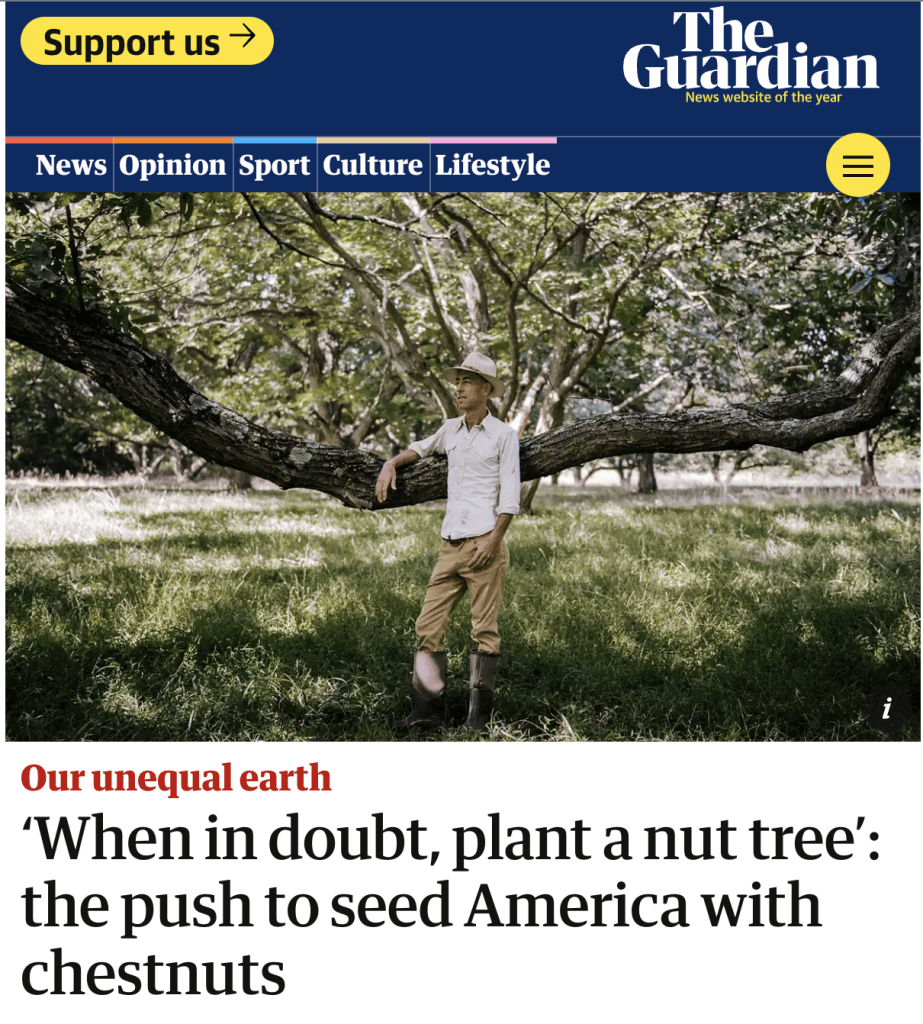Chestnut forests could provide food security for communities, be a boon for farmers and benefit the environment.
Michael Judd strides among the chestnut trees on the four-hectare (10-acre) swath of land that he manages in Frederick, Maryland. The trees spread above him, the last few nuts dangling from the branches like Christmas ornaments. Covering the ground is a soup of dead leaves, hiding spiky chestnut shells. Judd, 49, a lanky man who wears a different-colored woolen beanie every day, picks one up and demonstrates how easy it is to pop it open and reveal the nutritious morsel inside.
Judd bought this six-decade-old orchard to conduct experiments in service of his grander mission: to help plant 1m nut trees across the US’s mid-Atlantic region, chief among them the chestnut.
For Judd, the chestnut is a solution to environmental and economic problems facing the area. The chestnut is a perennial crop, meaning it doesn’t have to be replanted every year, so it’s a better moneymaker than the annual monocultural agricultural system that dominates so much of the American landscape. It grows easily in a variety of environments, from Maine to Florida. As a source of protein and carbohydrates, the chestnut – nicknamed “the bread tree” – can provide food security for communities.
– Read the Full Article Here –
Posted In: Media

